Holy Grail Found in Da Vinci’s Last Supper —
Status: True (in my opinion)
Here's a bit of a mystery. I received an email from someone called Prastil who wrote, "Check this hoax out:
DaVinciGrail.com." The site he directed me to claims that the holy grail has finally been discovered in Da Vinci's painting of the Last Supper. For centuries people have wondered why Da Vinci omitted the grail from his painting, given that the grail is one of the central elements of the Last Supper story. Its absence has spawned a variety of theories, such as the one elaborated in Dan Brown's The Da Vinci Code, that the holy grail was Mary Magdalene's uterus (and that the figure to the left of Jesus in the painting is Mary Magdalene). But DaVinciGrail.com claims that Da Vinci actually did include the grail in his painting, if you look hard enough. He concealed it as a symbol on the wall above the head of St. Bartholomew, the disciple at the extreme left. (I highlighted the cup in the image below).
It may seem a bit farfetched that after centuries someone discovered a detail in the Last Supper that no one had ever seen before, but as far as I can tell, that's the case. The man who noticed the grail in the painting was Gary Phillips, a Michigan computer programmer (and cryptologist). He was aided in his discovery by the fact that the painting was recently cleaned, revealing details previously concealed by dirt and grime. Of course, Phillips could be seeing a shape that was not intentionally placed there by Da Vinci, but once you see the cup, it seems so obvious that it's hard to believe it wasn't placed there on purpose. The legitimacy of Phillips's claim to have discovered this hidden detail is noted on a number of sites, such as
About.com's Art History blog.
Now here's where things get strange. Phillips has nothing to do with DaVinciGrail.com. Instead, Phillips maintains a separate site called
Realm of Twelve. DaVinciGrail.com is registered to (drumroll, please) Prastil, the same guy who emailed me telling me that the site was a hoax. Why did Prastil claim his site was a hoax? Was he trying to get me to write about his site, not thinking that I would check the domain registration? I have no idea (and I wrote about it anyway). But Phillips's discovery of the grail hidden as a symbol on the wall in The Last Supper seems real enough to me... unless there's some part of the story that I'm not clued in to. (Very possible.)


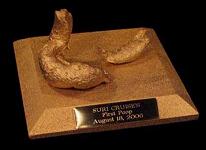 Daniel Edwards, creator of the controversial statue of Britney Spears giving birth on a bear-skin rug, has gone one step further with his new sculpture.
Daniel Edwards, creator of the controversial statue of Britney Spears giving birth on a bear-skin rug, has gone one step further with his new sculpture. 
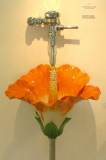


 The Guardian has a review of a new biography of the notorious art forger Han van Meegeren. The biography, by Frank Wynne, is titled I Was Vermeer: The Legend of the Forger who Swindled the Nazis. Van Meegeren, who was driven to a career in forgery by anger at being ignored by the art establishment, ended up becoming fantastically wealthy from his career in deception, before his downfall:
The Guardian has a review of a new biography of the notorious art forger Han van Meegeren. The biography, by Frank Wynne, is titled I Was Vermeer: The Legend of the Forger who Swindled the Nazis. Van Meegeren, who was driven to a career in forgery by anger at being ignored by the art establishment, ended up becoming fantastically wealthy from his career in deception, before his downfall: 
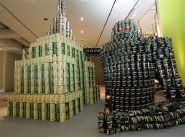
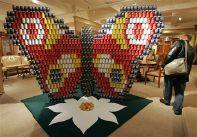
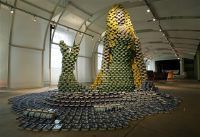

















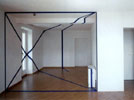
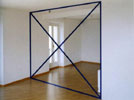



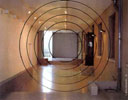


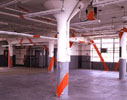
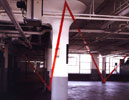

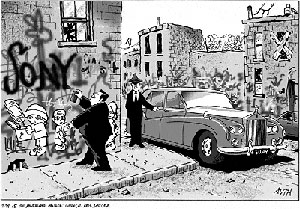
 I'm about five days late posting this, but better late than never. An advertisement for an "Extra Virgin Mary Statue" slipped by the editors of the conservative Catholic magazine, America. The advertisement offered "a stunning ... statue of the Virgin Mary standing atop a serpent wearing a delicate veil of latex." The "delicate veil of latex" was a blue condom. America's editors didn't examine the accompanying photo closely enough to realize this. And so the ad ran in the December 5 edition. People who contacted the seller were told the ad was meant "as an assault on Catholic faith and devotion." I don't know who the artist was who created the ad. Maybe it was Banksy.
I'm about five days late posting this, but better late than never. An advertisement for an "Extra Virgin Mary Statue" slipped by the editors of the conservative Catholic magazine, America. The advertisement offered "a stunning ... statue of the Virgin Mary standing atop a serpent wearing a delicate veil of latex." The "delicate veil of latex" was a blue condom. America's editors didn't examine the accompanying photo closely enough to realize this. And so the ad ran in the December 5 edition. People who contacted the seller were told the ad was meant "as an assault on Catholic faith and devotion." I don't know who the artist was who created the ad. Maybe it was Banksy.







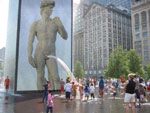
 The National Portrait Gallery has reported that the Grafton portrait, long thought to depict Shakespeare as a young man, doesn't depict him at all. They don't know who the guy in the painting is. The portrait apparently served as the inspiration for the portrayal of Shakespeare in the movie Shakespeare in Love.
The National Portrait Gallery has reported that the Grafton portrait, long thought to depict Shakespeare as a young man, doesn't depict him at all. They don't know who the guy in the painting is. The portrait apparently served as the inspiration for the portrayal of Shakespeare in the movie Shakespeare in Love.
 Artists work in all different kinds of mediums. Some work in oil. Others in stone. Dave Powell's medium is cats. He breeds cats and then displays them as art in plastic containers. He tries to breed for mutations such as polydactylism. He seems a little sensitive that people won't think his cat-in-a-box displays qualify as art, but he argues that they are since anything created with 'artistic intent' is art. I actually disagree. I think that art is whatever art critics define as art. In other words, it's up to the audience to decide what qualifies as art, not the artist. But as a cat lover, I'm perfectly to happy to regard cats as art.
Artists work in all different kinds of mediums. Some work in oil. Others in stone. Dave Powell's medium is cats. He breeds cats and then displays them as art in plastic containers. He tries to breed for mutations such as polydactylism. He seems a little sensitive that people won't think his cat-in-a-box displays qualify as art, but he argues that they are since anything created with 'artistic intent' is art. I actually disagree. I think that art is whatever art critics define as art. In other words, it's up to the audience to decide what qualifies as art, not the artist. But as a cat lover, I'm perfectly to happy to regard cats as art.
 The self-proclaimed 'art terrorist' Banksy made headlines back in March for sneaking his own work into various New York art galleries. Now he's done it again. He managed to sneak some faux prehistoric rock art into the British Museum. The rock art depicted a caveman pushing a shopping trolley. It hung in the British Museum for two days before being detected. The British Museum has now loaned the rock art back to Banksy who is displaying it at his own show in London. But they expect to get it back eventually.
The self-proclaimed 'art terrorist' Banksy made headlines back in March for sneaking his own work into various New York art galleries. Now he's done it again. He managed to sneak some faux prehistoric rock art into the British Museum. The rock art depicted a caveman pushing a shopping trolley. It hung in the British Museum for two days before being detected. The British Museum has now loaned the rock art back to Banksy who is displaying it at his own show in London. But they expect to get it back eventually.